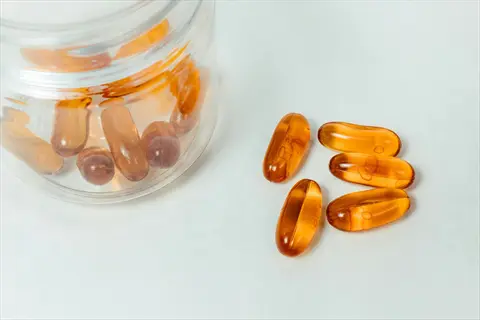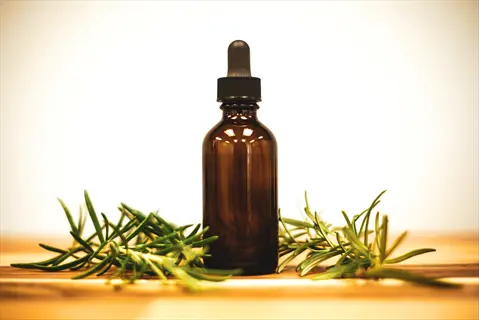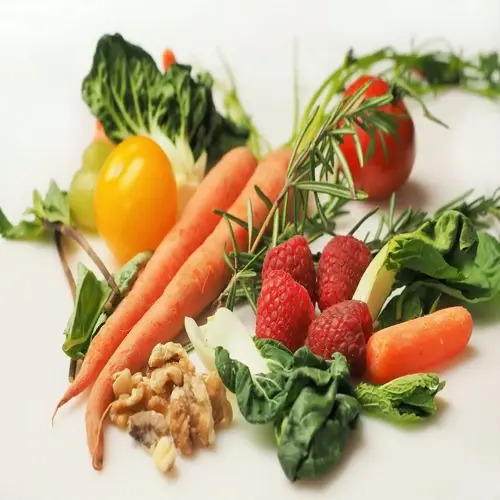Fat-Soluble Vitamins: Essential A, D, E, K Guide

Written by
Gina Mason
Reviewed by
Prof. Benjamin Murphy, Ph.D.Vitamins that are soluble in fat rely on dietary fats to ensure accurate absorption and biological usage.
Vitamin A supports vision and immune function and is available from both animal and plant sources.
Vitamin D production occurs with UVB light exposure and regulates calcium absorption.
Vitamin E is a powerful antioxidant that protects cell membranes from oxidation.
Vitamin K activates clotting factors and supports the process of bone mineralization.
Preventing deficiency requires a balanced diet, while toxicity must be avoided with supplementation.
Article Navigation
Fat-soluble vitamins are essential nutrients that your body requires to function properly. Unlike water-soluble vitamins, which are easily excreted from the body, fat-soluble vitamins dissolve in dietary fats. They are stored in the liver and fatty tissues for use later by the body. Because they are stored, they do not have to be taken every day. However, stored fat-soluble vitamins can cause problems if too much is taken.
There are four main fat-soluble vitamins: A, D, E and K. Vitamin A keeps your vision keen and your immune system running smoothly. Vitamin D helps your bones absorb the calcium they need. Vitamin E protects your cells from damage. Vitamin K ensures that your blood clots when you get a cut.
Consuming some fat along with these important vitamins is essential. Without fat, your body is unable to absorb them. This can also happen if you eat foods rich in vitamins. Think about adding olive oil to your salad or nuts to your snacks. This straightforward step helps make these vitamins work for you.
Optimizing Your Intake: Lifestyle Tips
By pairing foods rich in vitamins with healthy fats, you can help your meals work harder for you. A spinach salad becomes much more effective when a dressing made of olive oil is added. Slices of avocado on a sandwich help your body better absorb the vitamins and nutrients. Nuts sprinkled on steamed vegetables help to improve nutrient absorption significantly. These simple pairings are the key to maximizing vitamin absorption.
How you cook also alters the vitamin content. Steaming vegetables, such as kale, preserves vitamin K better than boiling. Boiling causes the vitamins to leach into the water, which is then discarded. Lightly sautéing on the stovetop in oil allows for more utilization of the fat-soluble vitamins as well. More gentle cooking methods help to preserve the more sensitive minerals.
Your skin makes vitamin D when it is exposed to UVB rays from sunlight. A short amount of exposure (approximately 10-15 minutes, a few times a week) to the midday sun can help. However, many people find it necessary to take the vitamin in supplement form, especially during the winter months. Vitamin K is administered to newborns as an injection immediately after birth to prevent bleeding. This is a common and recommended practice because it protects the baby from potential dangers until the baby's body begins to produce sufficient amounts of vitamin K on its own.

Diet Pairings
- Combination Principle: Combine vitamin-rich vegetables like spinach or carrots with healthy fats such as olive oil or avocado to create emulsification that enhances nutrient absorption in the small intestine.
- Meal Example: Toss raw spinach with sliced carrots, add avocado chunks, and drizzle with olive oil-based dressing to maximize uptake of vitamins A and E during digestion.
- Science Insight: Dietary fats trigger bile release from the gallbladder which breaks down fat molecules into absorbable micelles carrying vitamins through intestinal walls.
- Nutrient Synergy: Pairing tomatoes with olive oil increases lycopene absorption while simultaneously improving fat-soluble vitamin bioavailability from other ingredients.
- Portion Guidance: Use 1-2 tablespoons of healthy oils per serving of vegetables to optimize vitamin absorption without excessive calorie intake.
- Common Mistake: Avoid fat-free dressings on vitamin-rich salads which can reduce absorption of essential nutrients by up to 60%.

Cooking Methods
- Gentle Preparation: Steam kale or broccoli for 5-7 minutes to preserve heat-sensitive vitamin K which rapidly degrades when boiled or fried at high temperatures.
- Nutrient Protection: Avoid prolonged high-heat cooking that destroys vitamin E; instead quickly sauté vegetables in oils over medium heat to maintain nutritional value.
- Storage Practice: Keep plant oils in dark airtight containers to prevent light exposure that causes vitamin E oxidation and nutrient degradation over time.
- Water-Soluble Loss: Blanching vegetables before freezing preserves texture but causes significant vitamin K loss; steaming retains more nutrients.
- Oil Selection: Use oils with high smoke points like avocado oil for sautéing to prevent vitamin destruction from free radicals produced during overheating.
- Reheating Tip: Store cooked vegetables separately from fats and recombine when reheating to preserve vitamin integrity during multiple heating cycles.

Sun Exposure
- Optimal Timing: Expose arms and legs to direct sunlight for 10-15 minutes between 10am-3pm three times weekly to enable UVB radiation to convert skin cholesterol into vitamin D.
- Geographic Consideration: Individuals above 37° latitude should increase exposure during winter months when sunlight intensity diminishes significantly reducing natural vitamin D production.
- Safety Balance: Avoid sunscreen during brief exposure sessions since SPF 15+ blocks over 95% of UVB rays necessary for vitamin D synthesis in skin layers.
- Skin Tone Adjustment: People with darker skin require 3-5 times longer sun exposure than fair-skinned individuals to produce equivalent vitamin D amounts.
- Window Limitation: Glass blocks nearly all UVB radiation so indoor sunlight exposure through windows provides no vitamin D synthesis benefit.
- Weather Impact: Cloud cover reduces UVB intensity by approximately 50% requiring proportionally longer exposure times for adequate vitamin D production.

Supplement Guidance
- Deficiency Focus: Use vitamin D supplements only when blood tests confirm insufficiency or when limited sun exposure prevents natural synthesis through skin receptors.
- Newborn Protocol: Administer vitamin K drops or injections shortly after birth to prevent hemorrhagic disease since breast milk contains low concentrations of this essential nutrient.
- Risk Awareness: Avoid self-prescribing high-dose vitamin A or E supplements which may cause liver toxicity or bleeding risks especially with certain medications like blood thinners.
- Form Selection: Choose vitamin D3 (cholecalciferol) over D2 (ergocalciferol) as it maintains higher and more stable blood concentration levels for bone health support.
- Timing Strategy: Take fat-soluble vitamin supplements with your largest fat-containing meal of the day to significantly enhance absorption efficiency.
- Quality Verification: Select supplements with third-party certification seals to ensure accurate dosing and absence of harmful contaminants in vitamin products.

Food Rotation
- Variety Principle: Rotate between orange vegetables (carrots, sweet potatoes), dark greens (kale, spinach), and fatty fish (salmon, mackerel) to cover all fat-soluble vitamin needs.
- Seasonal Strategy: Emphasize vitamin D-rich mushrooms in winter and vitamin E-packed nuts in summer to align with seasonal availability and nutritional requirements.
- Color Cycling: Alternate between red (vitamin A), green (vitamin K), and yellow (vitamin E) produce throughout the week to ensure diverse phytonutrient intake.
- Source Diversification: Combine animal sources (liver for vitamin A) with plant sources (spinach for vitamin K) to create balanced nutrient profiles in meals.
- Preservation Method: Freeze seasonal berries rich in vitamin E precursors for year-round use while maintaining antioxidant potency through proper storage.
- Rotation Schedule: Create a three-day rotation cycle covering all vitamin groups: Day 1: Vitamin A focus, Day 2: Vitamin D focus, Day 3: Vitamin E/K focus.

Fat Source Selection
- Quality Priority: Choose extra-virgin olive oil over refined versions to preserve vitamin E content and beneficial polyphenols that enhance nutrient absorption.
- Source Variety: Alternate between plant oils (olive, avocado), animal fats (fish oil), and seed butters (almond, sunflower) for comprehensive fatty acid profiles.
- Omega Balance: Include both omega-3 rich oils (flaxseed, walnut) and omega-6 sources (sunflower oil) in moderation to support vitamin transport systems.
- Processing Awareness: Avoid hydrogenated oils which contain trans fats that can interfere with vitamin metabolism and cellular absorption mechanisms.
- Freshness Indicator: Monitor oils for rancidity by checking expiration dates and smelling for off-odors since oxidized fats reduce vitamin bioavailability.
- Storage Technique: Store oils in dark glass bottles away from heat sources to prevent vitamin degradation and maintain optimal nutritional quality.

Supplement Timing
- Meal Synergy: Take vitamin supplements with meals containing at least 10g of healthy fats for optimal absorption of fat-soluble nutrients.
- Digestive Alignment: Schedule vitamin intake with your largest meal to leverage natural bile production cycles that enhance emulsification and uptake.
- Dosing Strategy: Split high-dose vitamin E supplements between morning and evening meals to maintain consistent blood levels and reduce oxidation risk.
- Mineral Coordination: Take vitamin D supplements alongside calcium-rich foods to enhance bone mineralization through complementary nutrient action.
- Medication Separation: Allow 2-4 hours between vitamin K supplements and blood-thinning medications to prevent interference with anticoagulation therapy.
- Consistency Principle: Maintain consistent daily timing for supplement intake to establish stable blood concentrations of fat-soluble vitamins.

Hydration Impact
- Digestive Support: Maintain adequate hydration to ensure proper bile consistency and flow which is essential for fat emulsification and vitamin absorption.
- Toxins Flushing: Drink sufficient water to support liver function in processing and eliminating excess fat-soluble vitamins preventing toxic buildup.
- Transport Medium: Hydration maintains blood volume at optimal levels enabling efficient transport of vitamins to storage sites and target tissues.
- Dosage Balance: Avoid excessive water consumption immediately after meals which can dilute digestive juices required for vitamin absorption processes.
- Temperature Consideration: Increase water intake in warm climates where dehydration can impair vitamin metabolism and nutrient utilization efficiency.
- Quality Focus: Choose filtered water to reduce toxin exposure that might burden liver functions responsible for vitamin storage and activation.

Exercise Synergy
- Circulation Boost: Regular physical activity enhances blood circulation improving vitamin delivery to tissues and organs requiring these nutrients.
- Storage Optimization: Moderate exercise stimulates vitamin release from adipose tissue making stored nutrients more bioavailable for bodily functions.
- Timing Alignment: Schedule workouts before meals to increase metabolic rate and enhance vitamin absorption efficiency during subsequent food intake.
- Sun Combination: Combine outdoor exercise with sunlight exposure to simultaneously boost vitamin D synthesis and cardiovascular health benefits.
- Intensity Balance: Avoid extreme endurance activities that increase oxidative stress requiring higher vitamin E intake for antioxidant protection.
- Recovery Support: Utilize post-workout meals rich in vitamins A and E to combat exercise-induced inflammation and support muscle recovery processes.

Storage Practices
- Light Protection: Store vitamin-rich oils in dark glass containers to prevent light degradation of sensitive compounds like vitamin E tocopherols.
- Temperature Control: Keep nuts and seeds in cool environments below 70°F (21°C) to preserve vitamin E content and prevent rancidity development.
- Oxygen Barrier: Use vacuum-sealed containers for powdered supplements to minimize oxidation that destroys vitamin potency over storage periods.
- Moisture Management: Store dried fruits in low-humidity conditions to maintain vitamin A precursors like beta-carotene without mold formation.
- Refrigeration Rules: Keep fish oil supplements refrigerated to prevent molecular breakdown that reduces vitamin D and A bioavailability.
- Freshness Cycling: Implement first-in-first-out rotation for supplements and vitamin-rich foods to ensure consumption before expiration dates.

Preparation Timing
- Cutting Technique: Chop vegetables just before cooking to minimize surface exposure that accelerates vitamin degradation through oxidation processes.
- Pre-soak Avoidance: Skip water soaking for greens to prevent water-soluble vitamin loss that also diminishes fat-soluble nutrient availability.
- Immediate Use: Prepare vitamin K-rich herbs like parsley immediately before serving to preserve delicate compounds destroyed by air exposure.
- Batch Strategy: Cook large batches of vegetables for quick reheating rather than prolonged cooking sessions that progressively destroy vitamins.
- Peeling Consideration: Retain edible skins on vegetables like carrots and potatoes where significant vitamin concentrations exist just below the surface.
- Resting Period: Allow cooked vegetables to rest 2-3 minutes before serving to stabilize heat-sensitive vitamins after thermal processing.
Deficiency, Toxicity, and Safety
Fat-soluble vitamins function differently from nutrients. Their deficiencies occur slowly but cause serious problems. Vitamin A deficiency begins with night blindness and progresses to complete loss of vision. Vitamin D deficiency can lead to bone softening and mild muscle weakness. Toxicity can occur if excessive dietary supplements are taken. Too much vitamin A is harmful to the liver; too much vitamin D produces kidney stones.
Certain groups are at greater risk. Newborns often require vitamin K injections to prevent the risk of bleeding, while elderly individuals are frequently in need of vitamin D supplements due to reduced sunlight absorption. Individuals with intestinal disturbances, such as celiac disease, often have difficulty absorbing fat-soluble vitamins properly. Individuals with dark skin who live in northern climates require a larger intake of vitamin D.
Food first! Whole food offers a complete nutrient package that supplements do not. Spinach and olive oil provide Vitamin K and help with its absorption. Salmon gives natural vitamin D without the risk of overdose! If you must take supplements, get your blood work done first. Vitamin K appears to be the only vitamin that is non-toxic in food sources, with to little toxicity, even when consumed in large doses of these foods.
Vitamin A Deficiency
- Vision Impairment: Night blindness progressing to severe dry eyes and permanent vision loss if untreated.
- Skin Changes: Rough, dry skin with bumpy texture on arms and thighs.
- Immune Weakness: More frequent infections like respiratory illnesses due to weakened barriers.
Vitamin D Deficiency
- Bone Conditions: Soft bones causing deformities in children and fractures in adults.
- Muscle Problems: Weakness and pain in large muscle groups making movement difficult.
- Chronic Risks: Increased chance of immune system disorders and heart issues.
Vitamin E Deficiency
- Nerve Damage: Loss of reflexes and coordination problems affecting movement control.
- Vision Decline: Retinal damage leading to vision loss over time.
- Immune Issues: Reduced ability to fight infections effectively.
Vitamin K Deficiency
- Bleeding Problems: Easy bruising, nosebleeds, and prolonged bleeding from cuts.
- Newborn Risks: Dangerous bleeding in the brain or digestive system shortly after birth.
- Bone Health: Weaker bones and increased fracture risk from poor mineralization.
General Deficiency Indicators
- Fatigue: Persistent tiredness unrelieved by rest due to impaired cellular energy metabolism.
- Hair Loss: Thinning or patchy alopecia from disrupted keratinocyte formation and follicle cycles.
- Wound Healing: Delayed tissue repair from compromised collagen synthesis and immune responses.
Fatigue Indicators
- Persistent Tiredness: Unexplained exhaustion not relieved by rest or sleep.
- Energy Metabolism: Impaired cellular energy production affecting daily activities.
Hair and Skin Changes
- Hair Loss: Thinning or patchy hair loss from disrupted growth cycles.
- Skin Repair Issues: Slow healing of cuts and wounds with increased scarring.
Digestive Problems
- Appetite Loss: Reduced desire to eat leading to weight loss.
- Nausea/Vomiting: Frequent stomach upset without apparent cause.
Growth Issues
- Child Development: Stunted growth and delayed milestones in children.
- Bone Development: Improper bone formation causing deformities.
Neurological Symptoms
- Tingling Sensations: Numbness or pins-and-needles in hands and feet.
- Balance Problems: Difficulty walking steadily or maintaining coordination.
Mood Changes
- Depression: Persistent low mood and loss of interest in activities.
- Irritability: Increased frustration and reduced stress tolerance.
Vitamin A Toxicity
- Acute Effects: Nausea, dizziness, blurry vision, and headache.
- Long-Term Risks: Liver damage and bone pain from excessive accumulation.
- Pregnancy Concerns: Potential harm to developing babies during pregnancy.
Vitamin D Toxicity
- Calcium Excess: Loss of appetite, vomiting, kidney stones, and high blood pressure.
- Organ Damage: Kidney dysfunction and heart rhythm problems.
- Bone Loss: Weakened bones despite high calcium levels.
Vitamin E Toxicity
- Bleeding Risk: Increased bruising and bleeding complications.
- Thyroid Impact: Potential worsening of thyroid hormone function.
- Antioxidant Reversal: Harmful oxidative effects at very high doses.
Vitamin K Considerations
- Natural Safety: Food sources show no toxicity even in large amounts.
- Synthetic Caution: Artificial forms may cause harm in excessive doses.
- Medication Interaction: Important for people taking blood-thinning drugs.
General Toxicity Management
- Supplement Limits: Follow maximum intake levels: A (3,000 mcg), D (100 mcg), E (1,000 mg).
- Testing: Regular blood tests during high-dose treatment.
- Recovery: Stopping supplements and medical care for symptom relief.
Newborns
- Vitamin K Risk: All babies need preventive treatment at birth.
- Prevention: Single vitamin K shot after delivery prevents bleeding problems.
Elderly (65+)
- Vitamin D Need: Higher requirements due to reduced skin production and sun exposure.
- Solution: Supplements combined with calcium for bone protection.
Dark-Skinned Individuals
- Vitamin D Challenge: Natural sun protection requires longer exposure times.
- Regional Impact: Higher risk in northern climates with less intense sunlight.
Malabsorption Conditions
- Celiac/Crohn's Disease: Impaired fat absorption causing deficiencies in all fat-soluble vitamins.
- Management: Water-soluble vitamin forms and monitored high-dose supplements.
Vegans/Vegetarians
- Vitamin A/D/K2 Risk: Absence of animal sources (retinol, D3, MK-7) without proper plant substitutions.
- Mitigation: Fortified foods, algae-based D3, and fermented natto for K2.
Obesity
- Vitamin D Storage: Body fat holds vitamin D reducing available amounts.
- Dosing Adjustment: Higher supplement doses may be needed for sufficient levels.
Liver Disease
- Storage Impairment: Cirrhosis depletes hepatic reserves of vitamins A/D/E requiring frequent monitoring.
- Toxicity Risk: Impaired metabolism increases susceptibility to hypervitaminosis A.
Blood-Thinner Users
- Vitamin K Consistency: Important for stable medication effects.
- Daily Target: Steady vitamin K intake (90-120 mcg) for treatment stability.
Pregnancy
- Vitamin A Caution: High-dose supplements should be avoided.
- Vitamin D Need: Adequate intake supports baby's bone development.
Fat-Free Dieters
- Absorption Failure: <10g daily fat reduces vitamin absorption by 40-90% depending on source.
- Correction: Add 1 tbsp olive oil/avocado to meals to enable micelle formation.
Digestive Disorders
- Malabsorption: Conditions like celiac disease reduce fat and vitamin absorption.
- Management: Special vitamin forms and monitored supplementation.
Plant-Based Diets
- Vitamin Shortfalls: Possible gaps in vitamins A, D, and K2 without careful planning.
- Solutions: Fortified foods and specific plant sources like mushrooms and natto.
Liver Conditions
- Storage Problems: Impaired vitamin storage and processing capabilities.
- Monitoring Need: Regular blood tests to check vitamin levels.
Low-Fat Diets
- Absorption Failure: Insufficient fats prevent vitamin absorption.
- Improvement: Adding healthy fats like avocado or olive oil to meals.
Top Food Sources and Daily Requirements
Your daily vitamin A requirements change as you progress through the stages of life. Adults need 700 to 900 mcg RAE per day, which can be obtained from foods such as beef liver and sweet potatoes. Plant sources, such as carrots, supply beta-carotene, which is converted to vitamin A, but this process occurs less efficiently than when retinol is supplied from animal sources.
Fatty fish, such as salmon, are a good source of all-natural vitamin D3. Milk is also a good source, provided it is fortified. The skin also makes vitamin D when exposed to sunlight. The elderly often require vitamin D supplements because they do not produce sufficient vitamin D in their skin. Children and adults need about 600 IU per day, while the elderly need 800 IU.
The best sources of vitamin E come from nuts and seeds. An ounce of sunflower seeds gives you half of the amount you need in a day. Almonds and wheat germ oil are also excellent sources. Leafy green vegetables are the best sources of vitamin K. A tremendous amount is available from each serving of kale or spinach. If you are looking for vitamin K2, fermented natto is the best source, because K2 is highly absorbable.
When selecting sources for your vitamins, bioavailability plays a crucial role in determining what is actually absorbed. Specifically, Vitamin A from liver is better absorbed than Vitamin A from plants. Vitamin D3 from fish is better utilized than Vitamin D2 from mushrooms. Vitamin K2 from natto is available for use much longer than is K1 from vegetables. These foods should be consumed with healthy fats to maximize the body's ability to utilize them.
Vitamin A Requirements
- Infants (0-12 mo): 400-500 mcg RAE
- Children (1-18 yrs): 300-900 mcg RAE
- Adults (19+ yrs): 700-900 mcg RAE
- Pregnancy/Lactation: 750-1,300 mcg RAE
Vitamin D Requirements
- Infants (0-12 mo): 10 mcg (400 International Units)
- Children/Adults (1-70 yrs): 15 mcg (600 International Units)
- Seniors (71+ yrs): 20 mcg (800 International Units)
- Pregnancy/Lactation: 15 mcg (600 International Units)
Vitamin E Requirements
- Infants (0-12 mo): 4-5 mg
- Children (1-18 yrs): 6-15 mg
- Adults (19+ yrs): 15 mg
- Pregnancy/Lactation: 15-19 mg
Vitamin K Requirements
- Infants (0-12 mo): 2-3 mcg
- Children (1-18 yrs): 30-75 mcg
- Adults (19+ yrs): 90-120 mcg
- Pregnancy/Lactation: 75-90 mcg
Special Population Considerations
- Malabsorption Conditions: May require 2-3x higher doses under medical supervision
- Obesity: Vitamin D needs increase due to adipose sequestration
- Dark-Skinned Individuals: Higher vitamin D requirements in low-sun regions
Vitamin A Bioavailability
- Animal Sources: Retinol from liver/dairy has 90-100% absorption rate
- Plant Sources: Carotenoids from veggies require fat for conversion (3-6% efficiency)
- Enhancers: Cooking and adding fats improve plant-based absorption
Vitamin D Bioavailability
- Animal Sources: D3 from fish/eggs has better retention than plant D2
- Sunlight Synthesis: Skin production varies by location and skin pigmentation
- Absorption Boost: Take with calcium-rich foods for bone health synergy
Vitamin E Bioavailability
- Natural vs Synthetic: Natural alpha-tocopherol has 2x better utilization
- Nutrient Protection: Vitamin C helps regenerate oxidized vitamin E
- Fat Requirement: Minimum 3g fat per meal for optimal absorption
Vitamin K Bioavailability
- K1 vs K2: K2 from natto/cheese has longer half-life and better bone retention
- Gut Health Impact: Healthy microbiome enhances K production and absorption
- Consistency Need: Maintain stable intake for medication users
Cooking Impact on Nutrients
- Steaming: Preserves vitamins K and E better than boiling
- Sautéing: Enhances carotenoid absorption when done with healthy oils
- Storage: Freezing reduces vitamin E content by 10-25% over time
Absorption and Storage Mechanisms
Fat-soluble vitamins begin their journey in the small intestine. Dietary fat stimulates the gallbladder to release bile. The bile breaks down fats into small droplets, called micelles. The vitamins come along riding in the micelles, allowing for the absorption of the vitamins through the intestinal walls into the bloodstream.
Storage sites differ by vitamin. Vitamin A is mostly stored in the liver for a period of 6 to 12 months. Vitamin E is stored in fat tissues and remains for a period of more than six months. Vitamin D is preferentially stored in the liver and stays for a period of 2 to 4 months. Vitamin K is active in the body, but a period of only 1 to 2 weeks elapses before it is replenished.
The body releases vitamins into the bloodstream as needed. The release of vitamin A to defend against disease states, as with infections, increases. Lack of calcium stimulates the conversion of vitamin D. Vitamin K is recycled for consistent blood clotting assistance. This system works well when vitamins are introduced gradually, preventing waste and allowing for continual intake, but necessitates steady intake.
Many factors enhance or inhibit absorption; healthy fats, such as avocado or olive oil, help facilitate micelle formation. Gall bladder issues prevent the production of bile, limiting absorption. Medications like orlistat prevent the body from processing fats. Zinc and magnesium facilitate the action of various vitamins in the metabolic processes.
Digestive System
- Fat Emulsification: Dietary fats trigger bile secretion from the gallbladder to break fat molecules into micelles
- Micelle Formation: Fat-soluble vitamins combine with bile salts to form water-soluble micelles in the small intestine
- Intestinal Absorption: Micelles transport vitamins across intestinal walls into mucosal cells
Lymphatic System
- Chylomicron Packaging: Absorbed vitamins are incorporated into chylomicrons within intestinal cells
- Lymph Transport: Chylomicrons enter lymphatic vessels bypassing initial liver processing
- Bloodstream Entry: Lymph empties into subclavian vein delivering vitamins to systemic circulation
Liver Processing
- Chylomicron Remnant Uptake: Liver captures chylomicron remnants containing vitamins A, D, and K
- Storage Activation: Vitamins A and D are stored or converted to active forms (e.g., calcitriol for vitamin D)
- Release Regulation: Liver monitors body needs and releases vitamins bound to transport proteins
Adipose Tissue
- Vitamin E Storage: Adipose tissue serves as primary long-term reservoir for vitamin E tocopherols
- Gradual Release: Stored vitamin E slowly releases during fat metabolism over months
- Obesity Impact: Excess adipose tissue sequesters vitamin E reducing bioavailability
Regulatory Mechanisms
- Hormonal Control: Parathyroid hormone triggers vitamin D activation during calcium deficiency
- Demand-Based Release: Infections increase vitamin A release to support immune response
- Toxicity Prevention: Nuclear receptors regulate gene expression to prevent excessive storage
Enhancers
- Dietary Fats: Minimum 3-5 grams fat per meal improves absorption (e.g., olive oil with salads)
- Bile Health: Gallbladder function and bile salt production optimize micelle formation
- Pancreatic Enzymes: Lipase breaks triglycerides into free fatty acids for vitamin binding
Inhibitors
- Fat-Free Diets: Less than 1 gram fat per meal reduces absorption by 40-90% depending on vitamin
- Digestive Disorders: Celiac disease or Crohn's impairs fat emulsification and micelle formation
- Certain Medications: Orlistat blocks fat absorption; cholestyramine reduces bile availability
Nutrient Interactions
- Zinc: Required for vitamin A transport via retinol-binding protein
- Magnesium: Activates vitamin D conversion in liver and kidneys
- Vitamin C: Protects vitamin E from oxidation during absorption
Life Stage Variations
- Infants: Immature bile production reduces efficiency until 6 months of age
- Elderly: Reduced bile salt synthesis and pancreatic function decrease absorption
- Pregnancy: Increased intestinal absorption of vitamins A, D, and E to support fetal development
Genetic Factors
- BCO1 Gene: Variants affect carotenoid-to-retinol conversion efficiency (15-40% difference)
- GC Gene: Influences vitamin D binding protein production impacting transport efficiency
- VKORC1 Gene: Polymorphisms alter vitamin K recycling and clotting factor activation
The Four Fat-Soluble Vitamins Explained
Vitamin A has additional uses beyond its role in eye health and function. It helps preserve the barriers of the immune system and regulates cellular growth and development. The natural kinds of retinol derived from animal sources are effective immediately, while carotenoids obtained from vegetables must be converted. The period needed for the changeover varies widely among different people. Pregnant women should avoid excessive intake of animal forms of vitamin A, but vegetable forms are beneficial.
Vitamin D is a hormone that controls the absorption of calcium. Your skin produces vitamin D3 better from the sun than supplements provide D2. This vitamin requires two activations: one in your liver and one in your kidneys. People living in northern climates usually require supplements particularly during the winter months. Darker skinned individuals need longer sun exposure to obtain the same amount of vitamin D.
The cell membranes of the body are protected against oxidative damage by vitamin E. Natural alpha-tocopherol is absorbed twice as readily as synthetic preparations. It acts in conjunction with vitamin C, which helps regenerate the used vitamin E. Smokers require additional vitamin E to combat free radicals. Prematures require careful supplementation to prevent complications of deficiency.
Vitamin K activates its own clotting proteins through a special recycling system it uses. Unprocessed food vitamin K2 from microorganisms lasts longer than plant vitamin K1. Newborn babies receive injections of it because their bodies cannot produce sufficient quantities of it as yet. Also, those taking warfarin or coumarin anticoagulant medication must keep their intake regular. Little to no toxicity has been observed in studies of it, even at high doses of the food itself.
Core Functions
- Visual Cycle: Essential for low-light vision through pigment production
- Immune Defense: Maintains protective barriers in respiratory and digestive systems
- Cell Growth: Regulates skin and tissue development
Forms and Sources
- Retinol: Directly usable form from animal sources like liver and dairy
- Carotenoids: Plant precursors needing conversion to become active
- Conversion Efficiency: Requires significant plant intake for adequate levels
Special Populations
- Pregnancy: Excess animal-form vitamin may affect development
- Acne Treatment: Prescription forms require medical supervision
- Vegans: Need careful planning for sufficient conversion
Deficiency Impact
- Vision Loss: Night blindness progressing to permanent damage
- Infection Risk: Weakened defenses against illnesses like measles
- Skin Issues: Dry, rough texture and poor wound healing
Practical Intake Tips
- Food Pairing: Combine carrots or spinach with olive oil
- Supplement Caution: Avoid high-dose retinol without testing
- Cooking Method: Light steaming preserves plant nutrients
Core Functions
- Bone Health: Enables calcium absorption for strong bones
- Immune Balance: Regulates defense cell activity
- Cell Functions: Influences growth and development processes
Forms and Activation
- D3 (Natural Form): More effective than plant-based D2
- Skin Production: Created when sunlight hits skin cholesterol
- Activation Process: Liver and kidney conversion to active hormone
Special Populations
- Limited Sun Exposure: Northern residents need winter supplements
- Darker Skin: Require longer sun time for adequate production
- Weight Considerations: Higher body fat reduces availability
Deficiency Impact
- Bone Conditions: Rickets in children, osteomalacia in adults
- Muscle Weakness: Difficulty with movement and balance
- Chronic Risks: Linked to immune and heart issues
Optimizing Levels
- Sun Exposure: 10-15 min midday sun 3x/week on arms/legs
- Dietary Sources: Fatty fish and fortified dairy products
- Testing: Blood checks before high-dose supplementation
Core Functions
- Cell Protection: Shields membranes from damage
- Immune Support: Boosts infection-fighting cells
- Heart Health: Helps prevent artery clogging
Forms and Stability
- Natural Form: More effective than synthetic versions
- Primary Type: Alpha-tocopherol best retained by body
- Sensitivity: Breaks down with heat, light, or air exposure
Special Populations
- Smokers: Need extra for free radical protection
- Newborns: Often require supplementation
- Medication Users: High doses may affect blood thinning
Deficiency Impact
- Nerve Damage: Loss of reflexes and coordination
- Vision Decline: Retinal deterioration over time
- Infection Risk: Reduced ability to fight illnesses
Preservation Tips
- Storage: Keep oils in dark, airtight containers
- Cooking: Use low-heat methods like sautéing
- Pairing: Combine with vitamin C foods like bell peppers
Core Functions
- Blood Clotting: Activates proteins that stop bleeding
- Bone Strength: Enables calcium binding in bones
- Artery Protection: Prevents harmful calcium buildup
Forms and Recycling
- K1 (Plant Form): From greens with quick turnover
- K2 (Fermented Form): Better retention from natto/cheese
- Recycling System: Enzyme reactivation for repeated use
Special Populations
- Infants: Need preventive treatment at birth
- Medication Users: Consistent intake crucial for treatment stability
- Bone Concerns: May support density maintenance
Deficiency Impact
- Bleeding Issues: Easy bruising and prolonged wounds
- Newborn Risks: Potentially dangerous bleeding
- Bone Weakness: Increased fracture susceptibility
Synergistic Pairings
- Vitamin D: Combined for bone mineralization
- Calcium: Works with K for skeletal strength
- Healthy Fats: Needed for optimal absorption
5 Common Myths
Supplements can completely replace the need for dietary sources of fat-soluble vitamins.
Whole foods provide essential co-factors like minerals, fiber, and phytonutrients that work synergistically with vitamins, enhancing absorption and biological utilization in ways isolated supplements cannot replicate. For example, spinach delivers vitamin K alongside magnesium and chlorophyll, creating a nutrient matrix that optimizes vitamin function beyond what capsules offer alone.
Following a fat-free diet doesn't impact vitamin absorption since vitamins work independently.
Fat-soluble vitamins require dietary fats for emulsification into micelles during digestion, a process where bile salts break down fats to enable intestinal absorption. Without adequate fat intake, absorption rates plummet by 40-90%, as demonstrated in studies where fat-free salads yielded negligible vitamin E uptake compared to oil-dressed versions.
All forms of the vitamin equivalent provide equal value and bioavailability chances.
It has been shown that natural vitamins have increased bioavailability: vitamin D3 obtained from animal sources is effective in supplying the blood with vitamin D 70% longer than the plant D2 source, and the activity of natural alpha-tocopherol vitamin E is two times as great as that of synthetic dl-alpha-tocopherol. Therefore, the differences are of great importance in treatment for clinical results such as the maintenance of bone density and efficiency of supply of the antioxidant protection.
Taking in larger amounts of vitamins than the recommended requirements is always good for health.
However, exceeding certain established upper limits gives rise to documented toxic effects. Hypervitaminosis A leads to damage of the liver and to teratogenic effects. Hypervitaminosis D produces hypercalcenia, which is damaging to the kidneys and blood vessels. Megadoses of vitamin E (more than 1000 mg./day) give rise to blood clotting disturbance. The above considerations call for the professional guidance which has been mentioned when large doses of vitamins are considered.
Vitamin deficiencies are rare in the present world with the presence of fortified foods.
The general prevalence of deficiency remains high with over 40% of adults vitamin D deficient because of sedentary indoor lifestyles and sunscreens used. Newborns commonly require vitamin K prophylaxis to prevent hemorrhagic disease of the newborn and elderly populations consistently show evidence of chronic suboptimal vitamin E status despite food fortification indicating gaps existent.
Conclusion
Fat-soluble vitamins require dietary fat for absorption and proper functioning in the body. Without fats such as olive oil or avocado, the intestines cannot absorb them effectively. This means that even food rich in vitamins becomes ineffective when taken alone. Always take such foods with oil or fats to get the full dietary benefit.
When possible, always opt for whole foods over supplements. Spinach and almonds provide vitamin E, along with essential cofactors supplied in kind. Salmon provides a natural source of vitamin D and fats required for absorption. Only pills can lead to overdosage, while food offers balanced nutrition, but only pills when the diet won't give everything required.
Knowledge of storage aspects can save many perplexing problems. Some vitamins remain in the liver and fat depot for weeks or months, making it impossible to have a deficiency. Still, they expose the individual to an overdose. Supplementation should then be closely examined about vitamins A and D. Vitamin K is unique in that it has no toxic effects when consumed in food.
Your nutritional requirements change with age; children need more or different things than older adults. Pregnant women need more vitamin A but less retinol. Individuals with darker skin may require additional vitamin D supplementation. Digestive troubles may necessitate special arrangements. Listen to the body and consult experts when in doubt.
External Sources
Frequently Asked Questions
What are the four fat-soluble vitamins?
The four essential fat-soluble vitamins are A, D, E, and K. Vitamin A supports vision and immunity, vitamin D regulates calcium absorption, vitamin E acts as a powerful antioxidant, and vitamin K enables blood clotting and bone mineralization processes.
What happens if you take fat-soluble vitamins without food?
Taking fat-soluble vitamins without dietary fats significantly reduces absorption since fats enable emulsification into micelles for intestinal uptake. Without adequate fats, absorption rates can decrease by 40-90%, potentially leading to deficiencies despite supplement intake.
Which fat-soluble vitamin is most likely to cause toxicity?
Vitamin A poses the highest toxicity risk when over-supplemented, potentially causing liver damage, bone pain, and birth defects during pregnancy. Vitamin D also carries risks at excessive doses, leading to dangerous calcium buildup in organs.
What vegetables contain fat-soluble vitamins?
Key vegetable sources include:
- Carrots and sweet potatoes (rich in vitamin A precursors)
- Spinach and kale (excellent vitamin K sources)
- Broccoli and red peppers (provide vitamin E)
- Mushrooms exposed to UV light (contain vitamin D)
What conditions cause fat-soluble vitamin deficiencies?
Common deficiency triggers include:
- Fat malabsorption disorders like celiac or Crohn's disease
- Low-fat diets that prevent vitamin emulsification
- Liver impairment disrupting vitamin storage
- Limited sun exposure reducing vitamin D synthesis
Do you need to eat fat with vitamin D supplements?
Yes, consuming vitamin D with at least 10g of healthy fats improves absorption by enabling micelle formation. Take supplements with meals containing oils, nuts, or avocado to enhance bioavailability and prevent wasted supplementation.
What are symptoms of fat-soluble vitamin deficiencies?
Deficiency symptoms vary by vitamin:
- Vitamin A: Night blindness and frequent infections
- Vitamin D: Bone pain and muscle weakness
- Vitamin E: Nerve damage and poor coordination
- Vitamin K: Excessive bruising and bleeding
Can fat-soluble vitamins be excreted through urine?
Unlike water-soluble vitamins, fat-soluble vitamins aren't readily excreted in urine. They accumulate in liver and fatty tissues, which allows for storage but also increases toxicity risks if consumed excessively through supplements.
Which vitamins should not be taken together?
Avoid combining:
- High-dose vitamin E with blood thinners (increased bleeding risk)
- Vitamin A supplements with acne medication isotretinoin
- Vitamin K with warfarin without medical supervision
What vitamin deficiency causes muscle pain?
Vitamin D deficiency commonly triggers muscle pain and weakness due to impaired calcium regulation and neuromuscular function. Vitamin E deficiency may also cause muscle pain through oxidative damage to muscle cell membranes.

